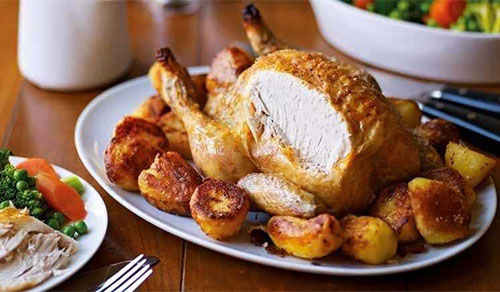
Chicken is one of those easy to cook, easy to mess up meats. Despite the fact that there are literally thousands of recipes out there for baking a variety of chicken meals, they all have one thing in common; and that is Temperature over Time to help ensure safe baking.
Here within this one simple to read article, we will be going over the various baking temperatures that are used for each of the common parts of a chicken and advising how long they need to be baked for.
Why is it Important to Bake Chicken Correctly?
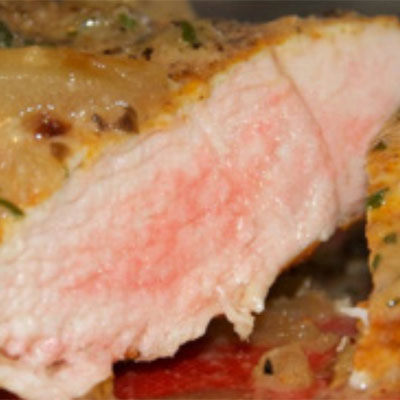
Have you ever noticed that when you go to a restaurant and order a steak, they’ll ask you “how would you like that done”; and yet they never ask you this when you order chicken? Do you know why this is?
This is simply because the risk of food poisoning from serving under-cooked chicken is far higher than it is for serving a customer a rare/medium-rare sirloin steak.
While it may be true that similar bacteria can be found on both beef and poultry meat, the risk of food poisoning is vastly different from one another. In most cases, the bacteria that can be found on a piece of beef can be found on the outside, not the inside, with minced meat being the exception of course.
Chicken meat, on the other hand, has bacteria that can be found all throughout the meat itself, even if it hasn’t been minced. This is why it is important to ensure that all forms of chicken meat are thoroughly cooked right through.
Recognizing if the Chicken Meat Has Been Cooked Correctly
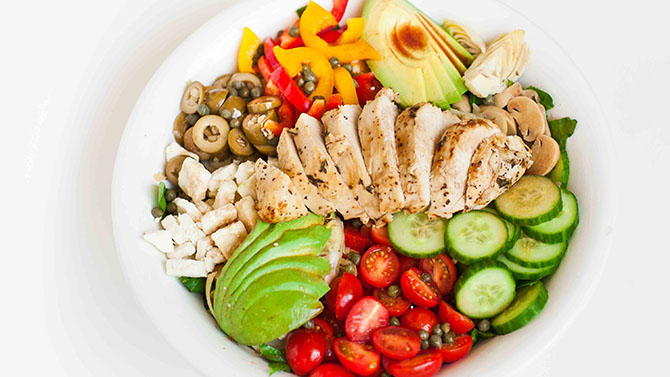
There are three main ways to tell if the chicken meat has been cooked correctly. One way is to check that the juices are flowing clear. If there is any pinkish coloration, then it is highly likely that the center of the meat is still raw.
The other way is to cut into the meat to visually see if it has been turned white all the way through. Under-cooked chicken meat will have a pinkish hue around the center, even if the rest of the layers are white. The muscle fibers of the meat will also begin to separate, allowing you to effectively strip the meat apart along the grain.
If you do not trust your own sensors, you could always try using a food-grade cooking thermometer. Just stick the metal prong into the center of the chicken meat to see if the temperature is at the required levels (see chart below for details).
So if the juices do not flow clear, the meat is still pink, the muscle fibers are hard to separate, or the internal temperature is too low, then chances are that your chicken meat is under-cooked, and may not be safe to eat.
Optimal Internal Temperatures For Baking Chicken:
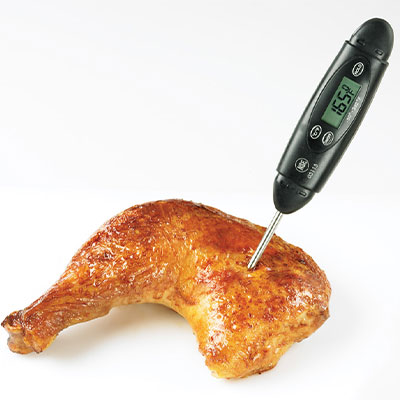
| Type Of Cut | Size | Safe Internal Temperature |
| Whole Chicken | Small (less than 3.5lbs – 1.5kg) Medium (up to 7lbs – 3.1kg) | 350°F (180°C) |
| Breast | Small Piece (4.9oz – 140g) Large Piece (7oz – 200g) | 165°F (74°C) |
| Thigh | Small Piece (2oz – 60g) Large Piece (4oz – 115g) | 165°F (74°C) |
| Drumsticks | Small Piece (6oz – 170g) Large Piece (9oz – 250g) | 165°F (74°C) |
| Wings | (3oz – 90g) a Piece | 165°F (74°C) |
How Long Should You Bake Chicken For, and At What Temperatures?
This is one of those “How long is a piece of string?” questions. The first thing you need to know is how big the piece of chicken you are baking is. The second thing is what type of oven are you using, and finally, how tender do you want the chicken meat to be.
The thicker the piece of chicken, the longer it is going to take to cook all the way through, and the lower the temperature you are going to be able to use. If the temperature is too high, and the piece of meat is too thick, it will start to burn the outside of the meat long before you start cooking it on the inside.
Baking chicken at a lower temperature for a longer period of time, if done correctly, can actually have the effect of making the meat fall off the bone.
Baking Chicken at 450°F (230°C):
Whole Chicken – It is not recommended that you bake a whole chicken at 405°F. The risk of failing to reach the ideal internal temperatures of 350°F (180°C) before burning the outside of the chicken, is just far too great.
Quarter Chicken – At 450°F, a Quarter of a chicken can be baked for 35-40 minutes.
Chicken Breast – At 450°F, Chicken Breast can be baked in the oven for 15-20 minutes.
Cutlets/Tenderloins – At 450°F, Chicken Cutlets/Tenderloins can be baked in the oven for 12-15 minutes.
Chicken Thighs – At 450°F, Chicken Thighs can be baked in the oven for 20-30 minutes.
Chicken Drumsticks – It is not suggested that you bake Chicken Drumsticks/Legs at 450°F. There is a risk that the heat may not be able to penetrate down to the bone before the meat starts to burn.
Chicken Wings – At 450°F, Chicken Wings can be baked in the oven in 30-40 minutes.
Strips/Fingers – Fresh strips can be baked at 450°F for 12-15 minutes, it is not advisable to bake frozen chicken at this temperature unless stated otherwise on the packaging.
Baking Chicken at 425°F (220°C):
Whole Chicken – At 425°F (220°C), a whole chicken can be baked for 20-30 minutes before reducing the temperature to 325°F, and baking for a further 1 hour and 20 minutes.
Quarter Chicken – At 425°F, a Quarter of a chicken can be baked for 40-45 minutes.
Chicken Breast – At 425°F, Chicken Breast can be baked in the oven for 20-25 minutes.
Cutlets/Tenderloins – At 425°F, Chicken Cutlets/Tenderloins can be baked in the oven for 20-25 minutes.
Chicken Thighs – At 425°F, Chicken Thighs can be baked in the oven for 25-30 minutes.
Chicken Drumsticks – At 425°F, Chicken Drumsticks/Legs can be backed for 30-35 minutes.
Chicken Wings – At 425°F, Chicken Wings can be baked in the oven in 30-40 minutes.
Strips/Fingers – Fresh strips can be baked at 425°F 15-18 minutes, it is not advisable to bake frozen chicken at this temperature unless stated otherwise on the packaging.
Baking Chicken at 400°F (200°C):
Whole Chicken – Smaller sized chickens, around 2.5lbs, can be baked in the oven at 400°F at 20 minutes per pound plus 30 minutes, or 1 hour and 20 minutes. Baking larger chickens at 400°F start running the risk of under-cooking the internal meat.
Quarter Chicken – At 400°F, a Quarter of a chicken can be baked for 45-55 minutes.
Chicken Breast – At 400°F, Chicken Breast can be baked in the oven for 20-25 minutes.
Cutlets/Tenderloins – At 400°F, Chicken Cutlets/Tenderloins can be baked in the oven for 25-30 minutes.
Chicken Thighs –To get the perfect balance of tender meat with crispy skin, bake your Chick Thighs at 400°F for 25-35 minutes.
Chicken Drumsticks – At 400°F, Chicken Drumsticks/Legs can be backed for 35-40 minutes.
Chicken Wings – At 400°F, Chicken Wings can be baked in the oven in 40-50 minutes.
Strips/Fingers – Fresh strips can be baked at 400°F 16-20 minutes, it is not advisable to bake frozen chicken at this temperature unless stated otherwise on the packaging.
Baking Chicken at 375°F (190°C):
Whole Chicken – A whole 3.5lbs (1.5kg) chicken, stuffed or whole, can be baked in the oven at 375°F for 1 hour and 45 Minutes. Or 25 minutes per pound, plus an additional 20 minutes.
Quarter Chicken – At 375°F, a Quarter of a chicken can be baked for 50-60 minutes.
Chicken Breast – At 375°F, Chicken Breast can be baked in the oven for 25-30 minutes.
Cutlets/Tenderloins – At 375°F, Chicken Cutlets/Tenderloins can be baked in the oven for 25-30 minutes.
Chicken Thighs – At 375°F, Chicken Thighs can be baked in the oven for 25-35 minutes.
Chicken Drumsticks – At 375°F, Chicken Drumsticks/Legs can be backed for 40-45 minutes.
Chicken Wings – At 375°F, Chicken Wings can be baked in the oven in 50-60 minutes.
Strips/Fingers – Fresh strips can be baked at 375°F 20-25 minutes, 25-30 minutes if frozen.
Baking Chicken at 350°F (175°C):
Whole Chicken – The ideal temperature for baking a whole 3.5lbs (1.5kg) chicken in the oven, stuffed or whole, is at 350°F for 1 hour and 30 Minutes. Or 20 minutes per pound, plus an additional 20 minutes.
Quarter Chicken – At 350°F, a Quarter of a chicken can be baked for 60 minutes, before increasing the temperature to 425°F(220°C) for a further 10-15 minutes.
Chicken Breast – A Piece of Chicken Breast that is between 5oz and 7oz (140g-200g) can be baked within 35-40 minutes at 350°F.
Cutlets/Tenderloins – At 350°F, Chicken Cutlets/Tenderloins can be baked in the oven for 30-35 minutes.
Chicken Thighs – Small to large-sized pieces of chicken thigh (2-4oz/60-115g) can be baked at 350°F for 30-35 minutes.
Chicken Drumsticks – A thick and juicy drumstick that is up to 9oz (250g), can be baked at 350°F for 45-50 minutes.
Chicken Wings – A tray of 3oz (90g) Chicken Wings can be baked within 65-70 minutes at 350°F.
Strips/Fingers – Fresh strips can be baked at 350°F 24-29 minutes, 30-35 minutes if frozen.
Baking Chicken at 325°F (160°C):
Whole Chicken – Baking a whole 3.5lbs (1.5kg) chicken in the oven, stuffed or whole, at 325°F can leave the meat dry if a dish of water is not added to the oven. Bake for approximately 2 hours; or 30 minutes per pound, plus an additional 20 minutes.
Alternatively, if the oven was to be preheated at 425°F (220°C), bake the chicken for 20-30 minutes before reducing the temperature to 325°F, and bake for a further 1 hour and 20 minutes.
Quarter Chicken – At 325°F, a Quarter of a chicken can be baked for 60 minutes, before increasing the temperature to 425°F(220°C) for a further 10-15 minutes.
Chicken Breast – At 325°F, Chicken Breast can be baked in the oven for 45-50 minutes.
Cutlets/Tenderloins – At 325°F, Chicken Cutlets/Tenderloins can be baked in the oven for 30-35 minutes.
Chicken Thighs – At 325°F, Chicken Thighs can be baked in the oven for 30-40 minutes.
Chicken Drumsticks – At 325°F, Chicken Drumsticks/Legs can be backed for 45-50 minutes.
Chicken Wings – At 325°F, Chicken Wings can be baked in the oven in 65-75 minutes.
Strips/Fingers – Fresh strips can be baked at 325°F 30-35 minutes, 35-40 minutes if frozen
Final Thoughts
Please use our estimations as a guide and adjust accordingly for your type of oven, and the size or volume of the chicken pieces that you will be baking. Always double-check the chicken meat for signs of under-cooking before serving, and be sure to avoid cross-contamination by cleaning up after yourself as you good, and by not using the same chopping board for cutting up your meats and vegetables.
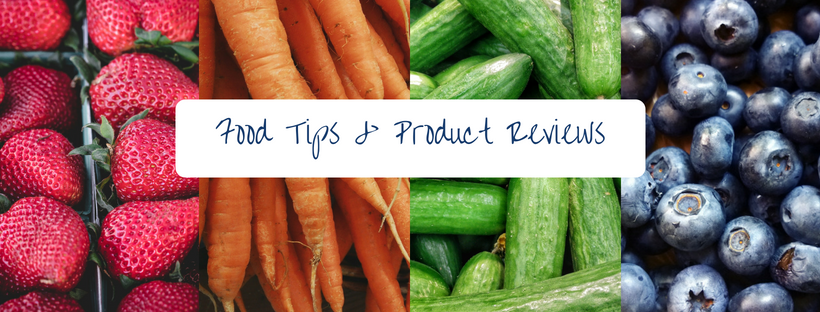
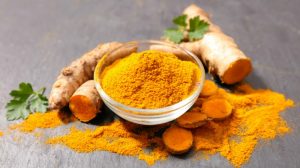
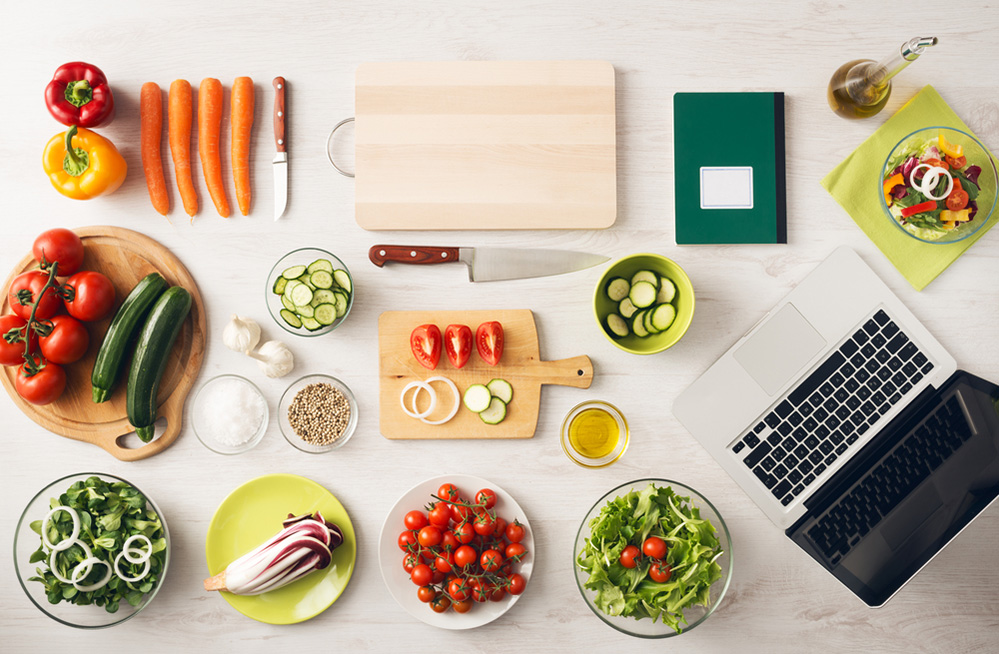
Leave a Reply